The importance of using a boot for your RJ45 cable
Network cables with RJ45 connectors are widely used in our lives. When choosing RJ45 Ethernet cables, you may find that the cable plugs of these cables look different. For example, some cables have rubber on their clips and some don't. Why does the RJ45 cable have such a design and what does it do? This article will cover the basics about RJ45 booting.
What Is Plug Boot for RJ45 Cable?
This rubber thing is known as a plug boot. A booted cable has the plug boot on the Ethernet patch cable end of the connector. You can find two main types of boots on the market. One is the separate boot that can be purchased individually to put on the cable, and the other is the injection-molded boot to be bought together with the cable. Of course, the latter are stronger and provide support for cables when the connector is pulled out of a switch, patch panel, or other device. Non-guided cables are not protected by the plug guide and are more prone to damage.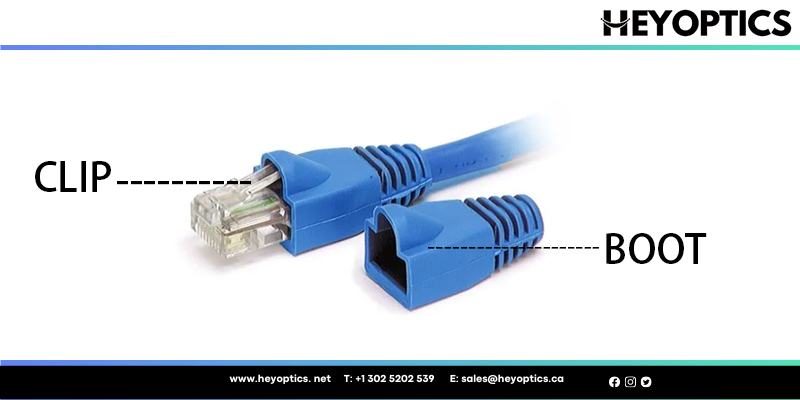
RJ45 boot function
Generally speaking, RJ45 boots are designed for two purposes. First, the plug boot prevents the connector clip from flipping up or even coming off the cable. When the plastic clip breaks, the cable will not be able to connect securely to the network, interrupting data transfer. Secondly, using the guide wire is also a kind of protection for your own nails. Due to the clip's small size, it is easy to snap into the nails when installing or removing the RJ45 cable. So, to better protect the cable connector and your fingernails, an Ethernet cable with a plug protector is a great solution.
Several types of RJ45 boot
If you're looking to buy boot cables, you should also consider which type of boot is best for your network, as plug boots also come in different structures. Common types of plug boots are described here.
Standard RJ45 boot
Standard boots look like half a dome. It protects the clips on all sides and prevents them from jamming or breaking. This is the type that is widely used to install cables through the floor or wall.
Molded RJ45 Boots
The molded sheath does not protect the locking clip. It's easy to plug in and pull out. This type of boot is suitable for hard-to-access spaces where cables are rarely plugged or unplugged.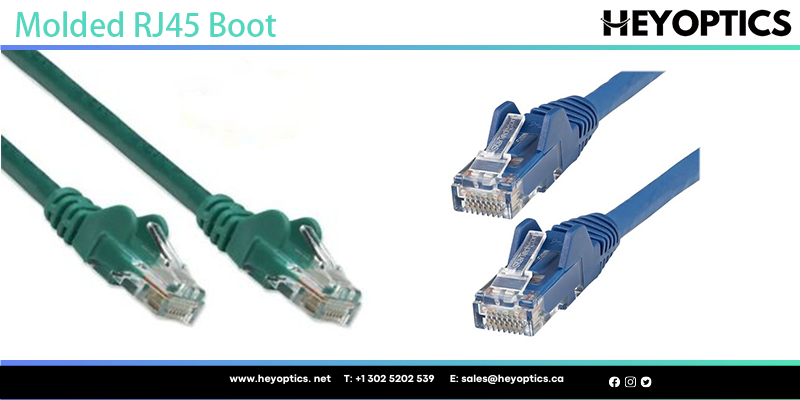
Unobstructed RJ45 boot(Snagless RJ45 Boot)
Snagless boots have a small flap to protect the RJ45 clip. It is typically used in applications with high insertion cycles in easily accessible spaces.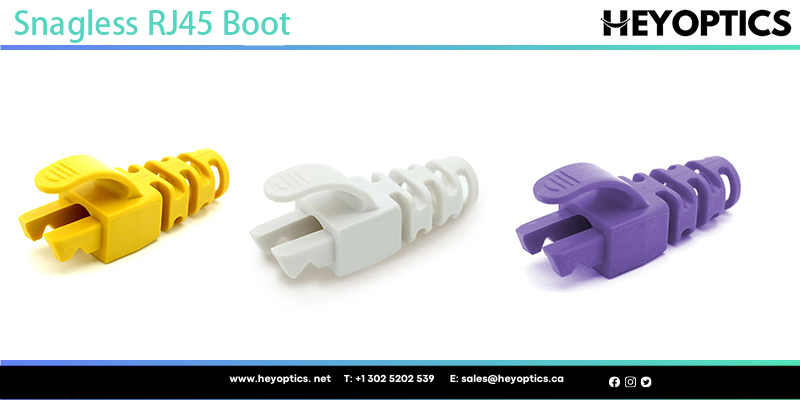
Slim RJ45 Boot
The slim boot has a 28% reduction in diameter than the Snagless boot. It offers minimal protection and is easy to plug or unplug. This type of booted cable is usually seen in high-density applications.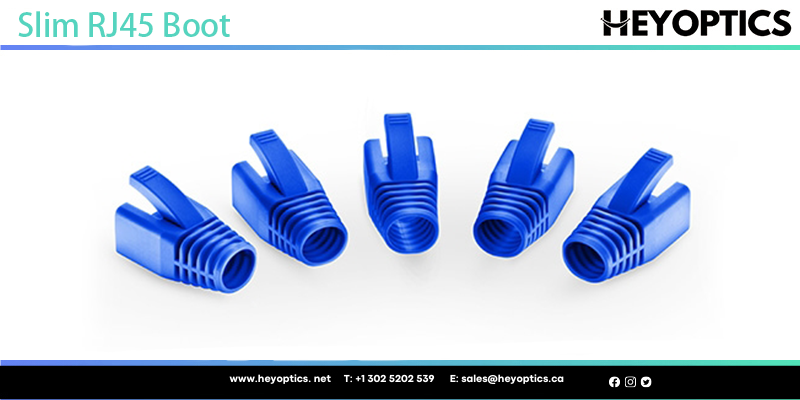
No Boot
Non-booted RJ45 cable is much easier for plugging or unplugging, but the whole connector is exposed with no protection. This type is typically used for applications that do not require frequent unplugging.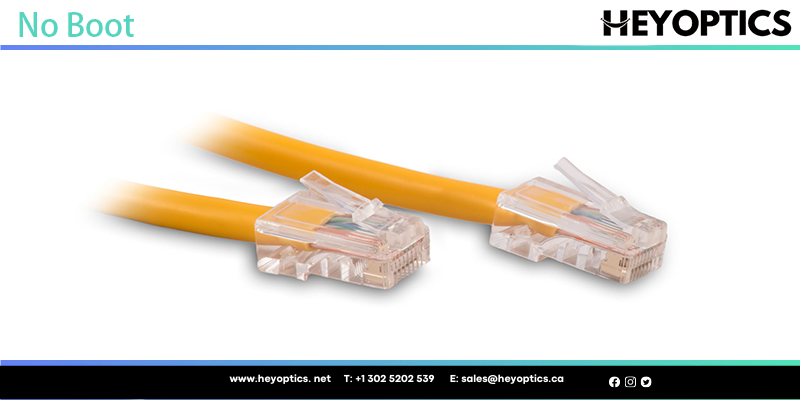
Locking Solution
Heyoptics offers a locking solution consisting of a strain relief cover and a separate locking pin that allows the user to decide whether to lock the RJ45 plug in place when installing the jumper. Heyoptics solutions enhance your network security and uptime and prevent accidental disconnections of critical connections.
As shown in the picture below, first insert the boot into the cable, the crimping process secures the boot, and it's ready to use!
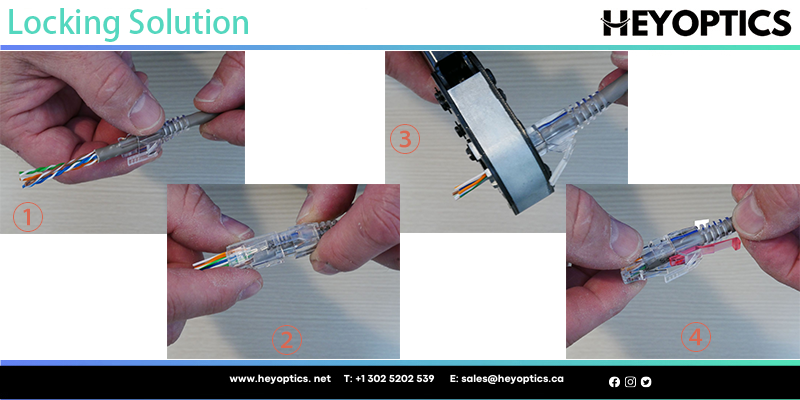
Conclusion
To sum up, if you want better protection for your Ethernet cable, using RJ45 boot is an ideal solution. Unguided cables are also acceptable if the application does not require much cable movement. No matter which type of RJ45 cable you choose, it will have to be decided based on your own project. For more information please contact sales@heyoptics.ca.



